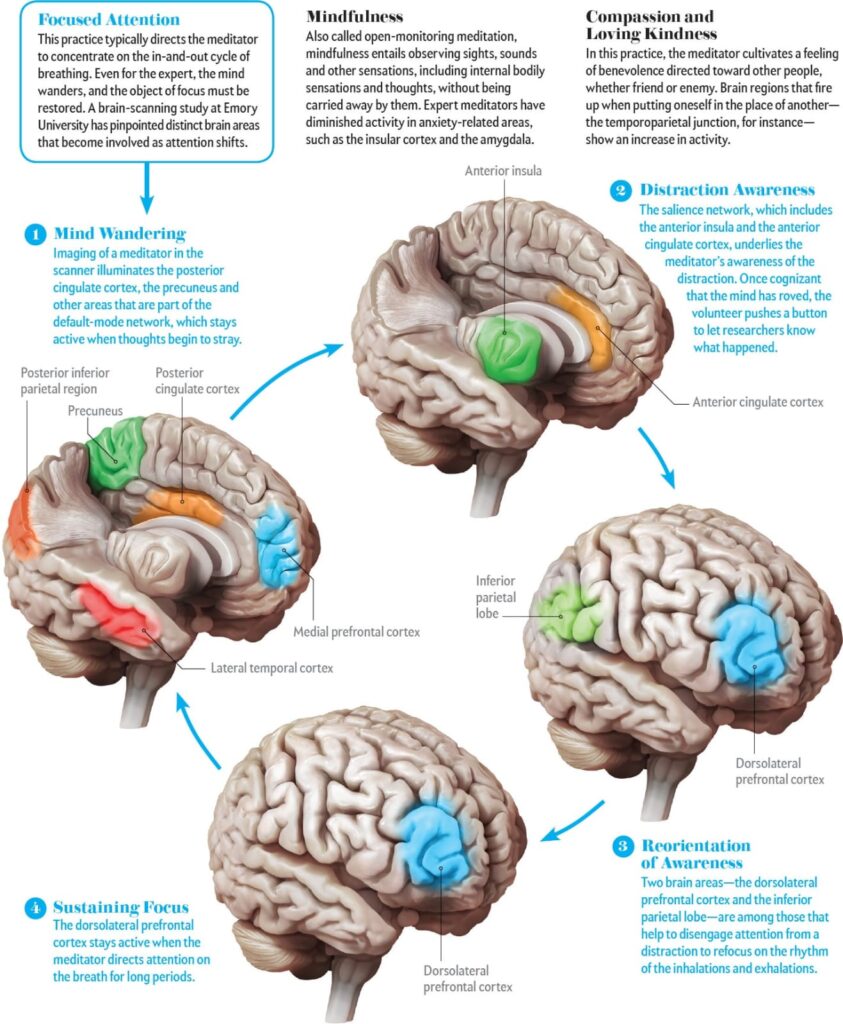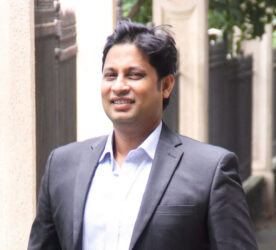Burnout Is the New Bottom Line
In 2025, burnout is not just a personal health issue—it’s a business crisis. Across industries, chronic stress is quietly sabotaging performance. Long hours, back-to-back meetings, and non-stop notifications are leaving teams exhausted. The pressure to deliver is relentless.
Even weekends offer no real recovery. High-performing employees are crashing. Not because they lack skill, but because they lack space to breathe. The expectation to be “always on” is no longer a badge of honor—it’s a fast track to breakdown.
A Deloitte report reveals that 77% of professionals have experienced burnout. Sleep loss alone costs the global economy billions each year. Yet many organizations still treat mental fatigue as a personal problem, not a structural one.
AI tools and performance dashboards promise efficiency. But they also amplify pressure. Metrics now measure every click, every response time, every decision. This breeds a culture of hyper-vigilance and performance anxiety.
The result? Decision fatigue. Emotional numbness. Creativity vanishing. Turnover rising. Executives are noticing. Top talent is walking away—not for higher pay, but for peace of mind. In this high-speed climate, sharp minds dull fast.
Without recovery systems, even the best strategies fail. Burnout is no longer a side effect. It’s the new bottom line.
From KPIs to Human Sustainability
The old model is breaking down. Chasing quarterly KPIs with caffeine, hustle, and weekend emails is no longer working. Smart companies are shifting gears. They’re moving from short-term performance hacks to long-term human sustainability.
This shift is quiet but powerful. Organizations like Google, Unilever, and Infosys are leading the way. They’re no longer focused only on output. They’re investing in what sustains that output—mental clarity, emotional resilience, and psychological safety.
Cognitive fatigue is the silent killer of innovation. Emotional burnout drains leadership capacity. That’s why top-tier firms are building workplaces where the brain is protected, not punished.
HR is evolving. It’s not just about hiring, payroll, or compliance anymore. It’s becoming the engine of human vitality. Companies are designing ecosystems that support attention, recovery, and mental stamina.
Instead of counting hours, leaders are asking better questions. How quickly does my team bounce back? How well do they think under pressure? Are they thriving—or just surviving?
The future of performance isn’t more effort—it’s better energy management. And that starts by recognizing people not as resources to be spent, but as capacities to be sustained. The smartest metric in 2025? A team that can last.

Longevity and Cognitive Wellness Enter the C-Suite
Longevity has gone mainstream. It’s no longer just a wellness trend—it’s a strategic priority in the boardroom. Executives are working longer, leading older, and facing nonstop complexity. This demands a new kind of leadership stamina.
It’s not enough to peak early. Today’s leaders need to sustain high performance over decades. That means protecting their most valuable asset—the mind. Corporate wellness is evolving fast. Gone are the days when perks meant gym memberships or fruit bowls.
The new focus is on cognitive fitness. Leaders are now expected to manage their mental clarity, emotional agility, and neuroendurance. Mindfulness, once seen as soft, is now a hard skill. It’s being built into executive coaching, strategic planning, and crisis response training.
It’s not a fringe benefit. It’s the foundation. Companies understand that decision fatigue, brain fog, and emotional reactivity come with high costs. The solution? Train the brain like you train your body.
McKinsey’s 2025 HR outlook confirms the shift. Over 40% of global firms now list cognitive wellness as a strategic priority. Longevity isn’t just about living longer. It’s about leading better, longer. In the C-suite, mental fitness is now non-negotiable.
A New Generation Demands Mindfulness in Executive Leadership
Millennials and Gen Z are changing the game. They’re not just tech-savvy—they have a new vision for leadership. For them, being a smart boss isn’t enough. They want leaders who stay calm under pressure. Leaders who show emotional intelligence.
Leaders who are genuinely human. Studies back this up. Research from PwC reveals that emotional stability and empathy rank among the top three qualities younger workers want in their leaders. These traits matter more than technical skills or traditional authority.
Younger employees expect leaders to manage their stress and communicate with intention. Mindless reactions won’t cut it anymore. Mindful communication and emotional regulation are essential.
This shift is more than a preference. It’s a demand. Companies that ignore it risk losing their best talent. The workplace is evolving into a place where emotional awareness is a core leadership skill.
Executives can no longer rely only on strategy and numbers. They must model self-awareness and calmness. In today’s world, where change accelerates every day, the leader who stays centered has the greatest influence.
The power dynamic is changing. The calmest mind in the room often holds the most power. This is leadership for the future.
Mindfulness: The Meta-Skill for Modern Leadership
How do leaders build empathy, focus, patience, and stamina? The answer is mindfulness. Once seen as a spiritual practice, mindfulness is now a science-backed tool for training the mind.
At its core, mindfulness sharpens present-moment focus—a vital skill in today’s distraction-heavy world. It helps leaders tune out noise and zero in on what matters. This clarity improves decision-making and reduces costly mistakes.
Mindfulness also boosts emotional regulation. When stress runs high, it helps leaders stay calm and respond thoughtfully—not react impulsively. This ability is crucial during crises and tight deadlines.
Long-term performance depends on mental stamina. Mindfulness trains the brain to sustain attention and energy over extended periods. It reduces fatigue and burnout, allowing leaders to lead consistently at their best.
Empathy and active listening grow stronger with mindfulness. Leaders become more attuned to their teams’ needs, building trust and connection. These qualities are the foundation of resilient, high-performing teams.
Neuroscience supports these benefits. Research from Harvard, Stanford, and other top institutions shows that just 10 to 15 minutes of daily mindfulness practice improves memory, lowers cortisol (the stress hormone), and increases cognitive flexibility.
In 2025, mindfulness isn’t optional. It’s a vital leadership meta-skill that powers sustainable success.
Case Studies: Where Mindfulness Meets Enterprise
Leading companies around the world are making mindfulness a core part of their culture. They see it as key to boosting wellness and neuroperformance in their teams. Infosys is a prime example.
The company has introduced mindfulness and inner engineering workshops specifically for leaders. These sessions focus on building clarity, resilience, and emotional balance. Infosys leaders report better decision-making and less stress during challenging times.
Salesforce takes a daily approach. They offer guided meditations every day to employees at all levels. Their global offices even include dedicated “mindfulness zones” — quiet spaces designed for meditation and mental reset.
This helps employees recharge and return to work with sharper focus. Tata Consultancy Services (TCS) combines ancient practices with modern productivity tools. Their programs blend yoga, breathing exercises, and mindfulness techniques.
The results are measurable: TCS has seen increased employee engagement, better focus, and higher productivity. Google has been a pioneer in workplace mindfulness.
Their “Search Inside Yourself” program teaches emotional intelligence, self-awareness, and mindfulness skills. The program is popular, especially among senior leaders. It has helped Google cultivate more empathetic, grounded leadership.
These companies prove mindfulness isn’t just about wellness—it’s a strategic tool for improving brain performance, emotional regulation, and team dynamics.
As mindfulness spreads across enterprises, it is reshaping how organizations think about leadership, productivity, and employee well-being. The message is clear: mental fitness is just as important as technical skill.

A New Kind of Program for a New Kind of Leader
Busy executives don’t have time for spiritual retreats or long meditation sessions. They need practical, time-efficient mental training that fits into their hectic schedules. This is where next-generation mindfulness programs come in.
These are built specifically for decision-makers, not monks. Our protocol is designed for the boardroom, not the ashram. It respects the reality of a leader’s day: back-to-back meetings, constant emails, and high-stakes decisions.
Instead of lengthy practices, it uses short, tactical interventions that deliver big impact. Leaders learn to weave 10-minute neural resets into their day. These quick mental breaks help clear cognitive clutter and restore focus.
Cognitive breathing techniques are taught to manage stress on the spot, calming the nervous system when pressure mounts. Executive attention drills sharpen concentration and build stamina.
These exercises train the brain to filter distractions and maintain clarity under stress. The goal is to build sustainable mental performance, not just temporary calm. Our approach skips the robes and jargon. It’s grounded in neuroscience and evidence-based practice.
It delivers measurable results for busy leaders who want to stay sharp, resilient, and emotionally balanced. This is mindfulness tailored for modern leadership: high-leverage, practical, and built for real-world demands.
Infrastructure for Leadership, Not an Escape From It
Many people think mindfulness means stepping away from work. They imagine quiet retreats or long pauses. But that’s a misunderstanding. Mindfulness is not an escape—it’s the mental infrastructure for thriving in high-pressure environments.
Like athletes train their bodies, executives must train their minds. Leadership today demands clear thinking, emotional balance, and quick recovery. These skills don’t come naturally under constant stress. They need intentional practice.
Mindfulness builds exactly this infrastructure. It helps leaders stay present, even when the stakes are high. It reduces impulsive reactions and emotional overload. This allows for better judgment and stronger relationships.
The future of leadership isn’t about doing more tasks or working longer hours. It’s about doing the right things with focused attention and calm energy. Mindfulness replaces the burnout cycle with a sustainable engine of performance.
Leaders who cultivate this mental infrastructure can handle complexity without losing clarity. They make decisions with empathy, not frustration. They recover faster from setbacks and avoid exhaustion.
In 2025, mindfulness is not a luxury or an add-on. It’s an essential part of effective leadership. It empowers leaders to meet today’s challenges with resilience, presence, and purpose. This is the foundation for the future of work.
From Boardroom to Bathroom: One Founder’s Reinvention
Meet Arjun Mehra, a fintech founder under relentless pressure. He was juggling three product launches and a $20 million funding round. The stress was overwhelming. Arjun started experiencing microblackouts and felt emotionally detached from his team.
His sharpness was slipping. Then he joined our program. Arjun learned to integrate simple but powerful practices into his day. He began doing 5-minute pre-decision resets before important calls. These short pauses helped clear mental clutter and sharpen focus.
In the evenings, he added a 10-minute neural wind-down to calm his nervous system. This improved his sleep and reduced stress. At work, Arjun introduced a “mindful-first” team huddle—a moment for presence before diving into tasks.
The change was dramatic. Within three months, investors noticed a new calm and clarity in Arjun’s leadership. His team felt more connected and engaged. Arjun himself said, “I didn’t need to step away from work to find peace. I just needed to step into my mind, daily.”
Now, mindfulness is his performance infrastructure. It fits seamlessly into his day—from high-stakes boardroom meetings to quick resets during bathroom breaks. For Arjun, mindfulness isn’t a pause from leadership. It’s the engine that drives it.
Prepare Your Mind for the Future of Work
The future of work isn’t just about speed. It demands more from our minds. Tasks are more complex. Emotions run deeper. The work can feel spiritually draining—unless we adapt. Smart executives in 2025 know this. They don’t just focus on productivity.
They invest in their inner operating system. Mindfulness and longevity are no longer perks. They are strategic necessities. Leadership fatigue is becoming a global epidemic. The best leaders fight back with mental clarity and emotional balance.
Calmness becomes their greatest asset. Your mindfulness practice isn’t a break from work. It’s your performance protocol. It powers clear thinking, steady leadership, and quick recovery.
If you lead others, your mental state shapes your team’s success. The question isn’t if you’ll adopt this mindset. It’s whether your mind will be ready when the future of work arrives. Prepare your mind now. It’s your most important leadership tool.
FAQs on The Future of Work: Why Smart Executives Are Prioritizing Mindfulness & Longevity in 2025
Why is burnout considered the biggest productivity killer in 2025?
Burnout causes chronic stress, mental fatigue, and emotional exhaustion, which significantly reduce focus, creativity, and decision-making ability.
How are companies shifting their performance metrics?
They’re moving from short-term KPIs to sustainable human performance metrics like resilience, cognitive endurance, and emotional regulation.
What does “longevity” mean in a leadership context?
Longevity refers to maintaining healthy, high-level cognitive and emotional performance over an extended career, not just short bursts of peak productivity.
Why is cognitive wellness becoming a priority in HR strategies?
Because mental health, clarity, and emotional agility directly impact employee engagement, innovation, and overall organizational success.
How do younger generations influence leadership styles?
Millennials and Gen Z expect leaders who are emotionally intelligent, calm under pressure, and deeply empathetic rather than just technically skilled.
What traits does mindfulness help build in leaders?
Mindfulness fosters present-moment focus, empathy, patience, emotional regulation, and mental stamina.
Is mindfulness only about meditation?
No, mindfulness includes practical mental training techniques like cognitive breathing, attention drills, and neural resets that fit into daily life.
How much time does it take to practice mindfulness effectively?
Studies show just 10 to 15 minutes daily can improve memory, lower stress, and enhance cognitive flexibility.
Which companies are leading in integrating mindfulness into their culture?
Infosys, Salesforce, Tata Consultancy Services, and Google are examples of companies embedding mindfulness and neuroperformance in leadership development.
How can busy executives incorporate mindfulness into their schedules?
By using short, tactical practices like 5 to 10-minute resets, breathing exercises, and mindful team rituals designed for high-pressure environments.
Why is mindfulness described as infrastructure for leadership?
Because it builds the mental foundation leaders need to perform consistently under stress, rather than being a temporary escape or break.
Can mindfulness help prevent leadership burnout?
Yes, mindfulness improves emotional regulation and recovery, reducing the risk of burnout and sustaining long-term performance.
What is “neuroperformance”?
Neuroperformance refers to optimizing brain function for clarity, focus, emotional balance, and stamina.
How does mindfulness improve team dynamics?
It increases leaders’ empathy and listening skills, fostering trust, psychological safety, and collaboration.
Are mindfulness programs effective for all leadership levels?
Yes, mindfulness benefits executives, middle managers, and frontline leaders alike by improving mental resilience and emotional intelligence.
What’s the difference between traditional wellness and cognitive wellness programs?
Traditional wellness often focuses on physical health, while cognitive wellness targets brain function, stress management, and emotional agility.
How does mindfulness training relate to longevity in the workplace?
Mindfulness supports mental longevity by enhancing brain health, reducing stress, and promoting sustained high performance over time.
Is mindfulness compatible with fast-paced, results-driven work cultures?
Absolutely. When integrated thoughtfully, mindfulness boosts productivity and decision quality without slowing down workflows.
What practical results can companies expect from embedding mindfulness?
Improved focus, lower absenteeism, better decision-making, reduced turnover, and enhanced employee engagement.
How can I start adopting mindfulness as a leader?
Begin with simple daily practices like short breath awareness, pre-meeting mental resets, or mindful pauses, then explore structured programs tailored to busy executives.





